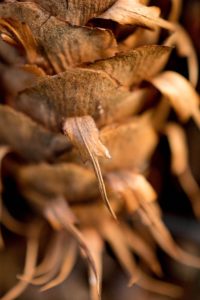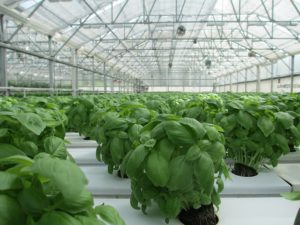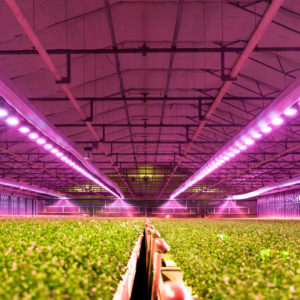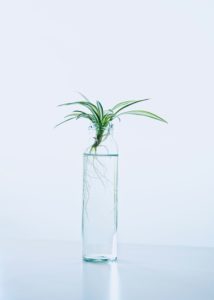Hydroponics Glossary
Hydroponics has plenty of terms that might seem like jargon to the unfamiliar. The good news is that, like anything else, once you get familiar with the main terms, it’s a lot easier to understand more complex principles. Let’s take a look at the most common terms in hydroponics, and the main principles you need to know:
Acid/Acidic – This indicates a solution has a pH below 7. pH is a measure of how acidic/basic water is. … Water that has more free hydrogen ions is acidic, whereas water that has more free hydroxyl ions is basic. Since pH can be affected by chemicals in the water, pH is an important indicator of water that is changing chemically. The letters pH stand for “power of hydrogen” and numerical value for pH is just the negative of the power of 10 of the molar concentration of H+ ions.
Aeroponics – Aeroponics is a form of hydroponics that relies on fine mist to nourish plant roots.
Airstone – Airstones are connected to an air pump, and most often made of extremely porous stone. When the pump is turned on, the air stone emits bubbles, which provides additional aeration to hydroponic reservoirs. An airstone, also called an aquarium bubbler, is a piece of aquarium furniture, traditionally a piece of limewood or porous stone, whose purpose is to gradually diffuse air into the tank
Alkaline/Alkalinity – This indicates a solution has a pH above 7. Alkalinity is the capacity of water to resist changes in pH that would make the water more acidic
Aquaponics – Aquaponics is a form of hydroponics that cultivates fish and plants, with fish in tanks below the growing plants. Fish waste provides fertilizer for plants, while the plants help maintain clean, stable water for the fish.
Beneficial Insect – These are insects that do not eat or harm plants, but will eat other insects and pests that may infest a crop.
Bloom Booster – This is a nutrient rich mixture that can be added to nutrient solutions to get a larger flower yield. These formulas often contain high levels of potassium and phosphorus.
Cloning – Using clippings gathered from mature plants to produce new plants.
Closed System – A hydroponic system in which the excess nutrient solution is reused after passing through the plants.
Deep Water Culture – A system wherein plants’ roots are continuously submerged in nutrient solution. Deep Water Culture is often abbreviated as DWC.
Drip System – A hydroponic system in which tubes with holes placed at regular intervals delivers the nutrient solution to plants. These perforated tubes may be set up with or without a pump, and with holes near each plant.
Ebb and Flow – A hydroponic system that may also be referred to as ‘flood and drain.’ Water floods the system at specific intervals, and gradually drains away.
EC – EC stands for Electrical Conductivity. This is one of the main ways of describing how much fertilizer is dissolved in your water. Because the nutrients are primarily composed of salts, the greater the density in your water, the higher the electrical conductivity will be.
Flowering Stage – This is a stage of the plant life cycle where plants begin producing pollen, flowers, and buds to aid their reproduction.
Flushing – Replacing nutrient solution for water (without any additives) to take care of issues related to nutrients that are imbalanced, or too heavily concentrated.
Fogponics – Technically still a form of hydroponics, fogponics is similar to aeroponics with the main difference being the much smaller mist droplets.
Foliage – This can refer to all green parts of a plant, but is much more commonly used to refer to the leaves of a plant only.
Germination – The process in which plants are sprouted from seeds.
GPH – A shortened term for ‘gallons per hour.’
GPM – A shortened term for ‘gallons per minute.’
Growing Medium – Growing medium is used in certain types of hydroponic systems, such as wick or drip systems. It’s available in a variety of different materials including: clay pellets, stone wool, perlite, vermiculite, rice or coconut husks, and more.
Grow room – A specified indoor area made to grow plants within a hydroponic system.
Growing Tray – The growing tray holds the plants, with roots at the base of the tray. Grow trays vary from system to system, although they serve the same basic purpose.
Growth Stages – These are parts of a plant’s life cycle as it grows from a seed to a crop ready for harvest.
High Intensity Discharge Lights (HID) – Specialized lighting that uses a lamp, integrated transformer, and capacitor to provide longer lasting, highly efficient lighting. These lights are known to run hot and require extra ventilation, so they are used primarily in large areas.
High Pressure Sodium Lights (HPS) – A form of HID lighting that is used for the fruiting and flowering growth stages in a variety of plants, because it emits light on the red and orange parts of the light spectrum.
Hot Spot – A common term referring to the space directly beneath lighting where light on the plants is most intense.
Hygrometer – A device used to measure humidity within a given space.
Insecticides – Special compounds designed to kill insects and pests. Insecticidal soaps are one of the most common insecticides used within hydroponic systems.
Leaf Burn – Burning marked by discoloration and drying, typically found at the tips of a plant’s leaves. Leaf burn may indicate an issue of lighting placement, with the burns occuring in plants that receive the most intense light.
Leaf Curl – A condition wherein leaves curl abnormally due to damage and other health issues.
Macronutrients – These are the main nutrients that plants require to grow. The most common are Nitrogen. Phosphorous, and Potassium, also referred to as NPK.
Micronutrients – Trace elements necessary to maintain healthy plants. While there are many micronutrients that plants require, the most common include zinc, boron, copper, iron, manganese, and chlorine.
NPK – NPK stands for Nitrogen, Phosphorous, and Potassium, the primary ingredients in hydroponic nutrients. These elements are combined in different ratios to suit different plants, so you will often see the term NPK ratio.
Nutrient Film Technique – A type of hydroponic system in which a constant stream of nutrient solution lightly flows over plant roots. The growing tray is placed at a slight slant, and often includes channels to direct the water.
Nutrient Solution – Your nutrient solution is essentially the water used in your system, with fertilizers, or ‘plant food,’ dissolved in it. In hydroponics, the term ‘Nutes’ is also used to refer to nutrients.
pH – pH stands for Potential Hydrogen. It serves as an indicator for the levels of acidity and alkalinity in your water. The scale ranges from 0 – 14, with 7 being a neutral pH level.
Photoperiod – This is the amount of time that light is placed on the plants.
Pump – Again, this term is somewhat self explanatory. This equipment pumps water throughout the hydroponic system. Most hydroponic pumps are rated in the amount of gallons per hour they can circulate.
Reservoir – A hydroponic reservoir is much what it sounds like: it’s where the water for your system is kept. You may also see the reservoir referred to as the tank.
Run to Waste – Systems wherein nutrient solution is discarded after cycling through the plants, rather than being reused.
Total Dissolved Solids (TDS) – A measure of parts per million (PPM) showing the amount of minerals dissolved within the nutrient solution.
Vegetative Stage – This is the part of a plant’s life cycle where rapid growth is seen. Plants become much larger, and grow more foliage (leaves), as well as stems and branches. Plants quickly absorb nutrients during this stage to fuel their growth.
Water Culture – Water culture refers to growing plants without soil, and in water.
Wick System – A hydroponic system in which one end of a cord or ‘wick’ is placed in the nutrient solution reservoir and the other end is placed within growing medium in a grow tray. The absorption gradually moves up the wick and into the growing medium for roots to soak up.
Yield – Yields in hydroponics, and other forms of agriculture, refer to the ultimate amount of crops produced.



